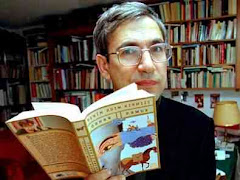
The Armenians in southern Kurdistan particulary lives in the western parts of Iraqi-Kurdistan.
Southern Kurdistan (Iraqi occupied Kurdistan), in the village Avzarok in southern Duhok close to Zaxho , Armenians lives in a small community and very aware of their identity and culture even if their first language is kurdish. Armenians also lives in Zaxho, tragicly 9 000 thousand Armenians where slaughtered by the Kurds in western Zaxho as a part of the Christian genocide as a band of para-militaries under the Ottoman empire.
According to Kurdistan law, all minority languages including Syriac, Turkmeni and Armenian are protected and the first two languages have a local official status in the areas where a majority of the inhabitants speak those languages, alongside Kurdish language.
 St Vartan Church in Duhok
St Vartan Church in DuhokIn northern Kurdistan (Turkish occupied Kurdistan), in Sasun in the province of Batman that belonged to Greater Armenia from 190BC to 66EC we can still find a Armenian community.
Sasun (Armenian: Սասուն;) is a area where Armenian epic of "The Daredevils of Sasun" (Sasna Dzrer) in wich the Armenian folkhero of the name Sasna drives enemys and invaders from Armenia. Many Armenians live in northern Kurdish citys like Urfa and Nuseybin since the time of the Kingdom of Armenia, Ottoman Empire and the Christian genocide.
In Vaspurakan (province around the lake Van during the time of Great Armenia, near the Armenian-Turkish boarder) where Armenians lived, mostly converted to Islam and were Kurdified.
The Armenians in eastern Kurdistan (Iranian occupied Kurdistan), have their own communitys in the city Urmia near the famous Lake Urmia. This city has since its long history been the
city of many ethnic groups like the Assyrians, Kurds, Armenians, Azerbaijanis and the Iranians.
According to Dr. Jacob Sargis it was estimated to be 45 000 chiefly Armenian refugees in Urmia during the year 1916. Here in Urmia, Assyrians and Armenians gathered and fought the Turks and the Kurds south of the Lake Urmia.
The Eastern Armenian in the diaspora is primarily spoken in eastern Kurdistan, Iran and former Soviet states.
Sasun (Armenian: Սասուն;) is a area where Armenian epic of "The Daredevils of Sasun" (Sasna Dzrer) in wich the Armenian folkhero of the name Sasna drives enemys and invaders from Armenia. Many Armenians live in northern Kurdish citys like Urfa and Nuseybin since the time of the Kingdom of Armenia, Ottoman Empire and the Christian genocide.
In Vaspurakan (province around the lake Van during the time of Great Armenia, near the Armenian-Turkish boarder) where Armenians lived, mostly converted to Islam and were Kurdified.
The Armenians in eastern Kurdistan (Iranian occupied Kurdistan), have their own communitys in the city Urmia near the famous Lake Urmia. This city has since its long history been the
city of many ethnic groups like the Assyrians, Kurds, Armenians, Azerbaijanis and the Iranians.
According to Dr. Jacob Sargis it was estimated to be 45 000 chiefly Armenian refugees in Urmia during the year 1916. Here in Urmia, Assyrians and Armenians gathered and fought the Turks and the Kurds south of the Lake Urmia.
The Eastern Armenian in the diaspora is primarily spoken in eastern Kurdistan, Iran and former Soviet states.

















2 comments:
According to Kurdistan law, all minority languages including Syriac, Turkmeni and Armenian are protected and the first two languages have a local official status in the areas where a majority of the inhabitants speak those languages, alongside Kurdish language.
wordpress development vancouver ,
web development services vancouver ,
hermes belt
supreme hoodie
supreme clothing
golden goose sneakers
moncler
off white outlet
off white jordan
curry 6 shoes
a bathing ape
yeezy
Post a Comment